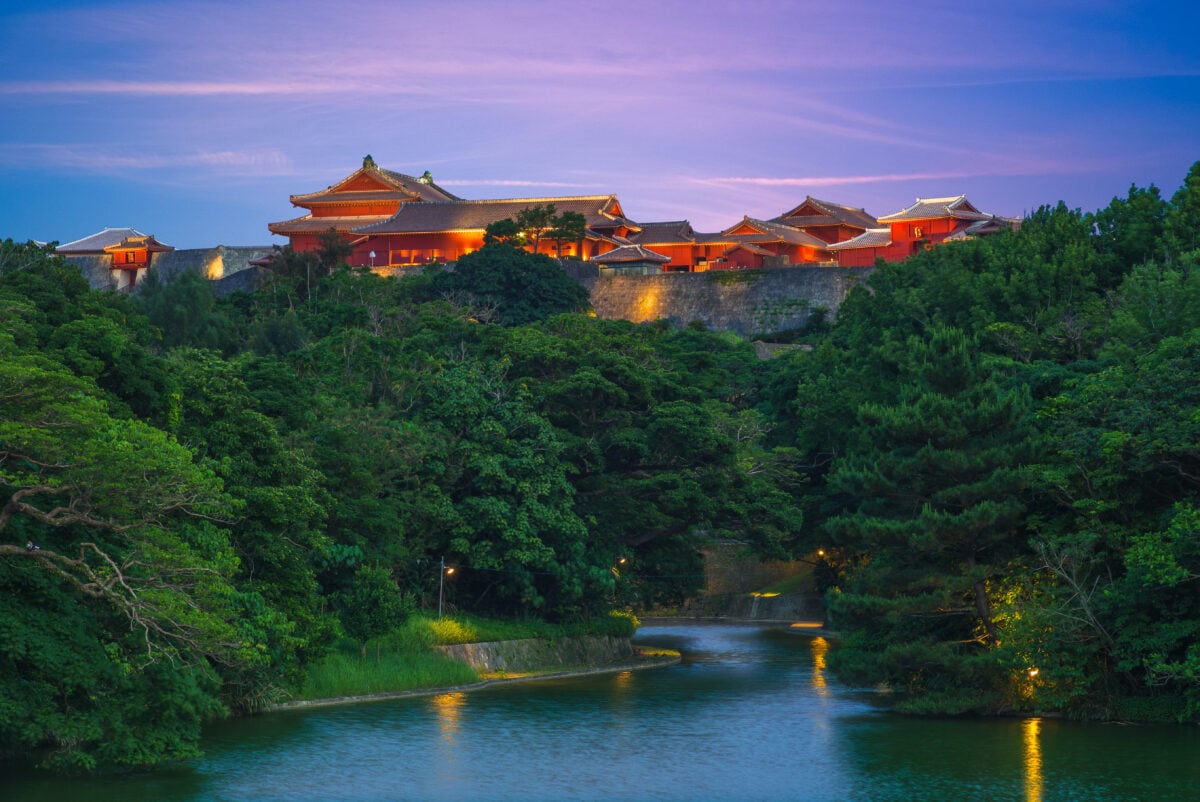Okinawa has one of the largest populations of people over 100 years old in the world. Here’s the diet that Okinawans eat in order to live longer and stay healthy well into old age.
When it comes to longevity, there is no one quick fix to guarantee you’ll stay healthy and live longer. However, certain lifestyle factors such as diet, exercise, and community – in combination with genetics and access to healthcare – may help to support a longer life.
For example, several studies have linked regular meat consumption with elevated health risks, while others suggest that plant-based diets – particularly those rich in nutritious whole foods – reduce risk and promote health. Plant-based whole foods are thought to aid overall longevity and could even help to reduce the risk of age-linked illnesses as people get older.
Studies confirm that staying active also helps people live longer and stay healthier. As reported by the BBC, some of the negative effects of inactivity are sometimes confused with natural age-related decline. For example, a slowing metabolism can increase the likelihood of chronic diseases, high blood pressure, and the body’s inability to break down fat.
Staying active also increases the chances of retaining mobility into old age, which helps people maintain their independence for longer. This, in turn, improves mental health and overall quality of life, and also enables older communities to better support each other. All of these factors that aid longevity and healthy aging can be found in Okinawa, Japan.

Okinawa has a population of around 1.4 million, making it the least populated island in the Japanese archipelago. The area has almost double the number of centenarians per 100,000 people that Japan does overall. This demographic is also healthier than comparable aging populations elsewhere, with two-thirds able to live independently until the age of 97.
According to a study published in Science Direct, many of the Okinawans over 100 years old are shorter, leaner, and experience less age-related disease than other people their age in Japan. Over 85 percent of Okinawa’s centenarians are women, which is a slightly higher ratio than the national average and a significantly higher ratio than the global average.
The study noted that more meat, more calories, and less exercise in modern-day Okinawa have resulted in a higher rate of lifestyle-related diseases. However, when today’s centenarians were middle-aged, Okinawans’ lifestyles were far more traditional.
By “several measures” of health and longevity, the study states that the island’s residents can claim to be “the world’s healthiest and longest-lived people.” While the study notes that Okinawans are “genetically distinct” from other Asian populations, it is likely that the island’s centenarians remain healthy due to a combination of genetics with lifestyle, including diet.
Most Okinawans are part of a “moai,” which loosely translates into “meeting for a common purpose.” These moai are often tight-knit, lifelong friendship groups that support each other into old age. The word moai comes from the ancient practice of “yuimaru,” or the “spirit of cooperation.” Historically, yuimaru can be seen as a form of community-based mutual aid, but in modern times is often used to refer to meaningful and consistent social groups.
Combined with the Japanese notion of “ikigai,” or “reason to live,” most Okinawans experience the benefits of moai and yuimaru along with a meaningful sense of purpose. This unique combination exists in direct contrast with the Western individualism, loneliness, and feelings of purposelessness that undermine health and longevity in other parts of the world.
Plant-based whole foods make up 90 percent of the traditional Okinawa diet, and less than one percent comes from animal ingredients like meat, fish, eggs, and dairy. As with any regional cuisine, Okinawa’s food habits have grown from its unique culture and environment.
The traditional diet emphasizes carbohydrates, and Health reports that complex carbs like sweet potatoes make up around 85 percent of the region’s macronutrient consumption. Both Japanese purple sweet potatoes, which are particularly starchy and sweet, and orange ones, can be found in Okinawan dishes, each known for its nutrient density and health benefits.
Whole grains like brown rice, millet, and wheat noodles are commonly eaten, as are high-protein soy-based foods like tofu and miso. The Okinawan diet is also rich in sea vegetables like kombu and wakame, as well as the regional delicacy umibudo, or “sea grapes.”
Other vegetables, including cabbage, carrots, and taro roots, are often incorporated into daily meals, as is nigauri, a bitter melon known locally as “goya.” The unique summer fruit is an acquired taste with an extremely bitter but refreshing flavor. Culinarily, it is treated as a vegetable and can be found in stir-fries alongside tofu, meat, and other vegetables.
Another cornerstone of the Okinawa diet is the concept of “hara hachi bu,” a Confucian teaching that encourages eating until 80 percent full only. While calorie restriction is often thought of as unhealthy, some experts suggest that hara hachi bu may naturally encourage mindful eating, smaller portions, and improved overall health without restrictive dieting.

A 2023 study published by Nutrients found that following a traditional Okinawa diet for 12 weeks resulted in gut health improvements and a reduction in blood sugar, insulin, and cholesterol levels. Craig Willcox, a professor of gerontology at Okinawa International University and co-director of the Okinawa Research Center for Longevity Science, told National Geographic that the diet’s nutrient-density, fiber, and reduced calories are key factors in its healthfulness.
“It’s rich in phytonutrients, including lots of antioxidants. It’s low in glycemic load, and it’s anti-inflammatory,” said Willcox. He added that this is particularly significant because “chronic low-grade inflammation at the cellular level drives the aging process and age-related diseases such as heart disease, stroke, diabetes, and cancer.”
While Okinawa’s diet and lifestyle are undoubtedly unique, the island’s combination of nutritious, plant-based foods with community engagement, staying active, and a sense of purpose or direction can also be found in each of the world’s so-called “Blue Zones.”
The five Blue Zones are all known for their long-lived inhabitants, and include: Ikaria, Greece; Sardinia, Italy; the Nicoya Peninsula, Costa Rica; and Okinawa, Japan. The pre-existing term was popularized by American author and journalist Dan Buettner in 2005.
Nafsika Antypas of the television program Plant-Based by Nafsika recently analyzed which factors united Blue Zones. She noted that all five regions celebrated physical activity, community living, mindfulness, and purpose. Each location also prioritized whole, unprocessed fruits and vegetables, natural sugars, and beverages such as herbal tea.
“It’s a remarkably healthy diet because it adheres to the fundamental theme of healthy eating – it’s real food, mostly plants in a sensible, balanced assembly,” said David Katz, a preventive medicine specialist, also in conversation with National Geographic. “Optimal nutrition keeps everything working well so that you keep working well. By putting good fuel in the tank, you’re optimizing the engine and you’re essentially detoxing every day.”













